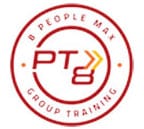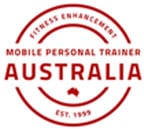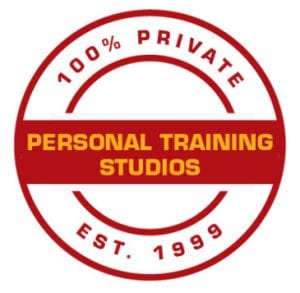A seated row with a resistance band is a good way to master the action of engaging the subtle muscles between the shoulder blades and the back of the shoulder, without also having to hold yourself in a challenging bent-over position (like in a bent over row). Once you have mastered it seated, you can move to standing, and then progress to bent over.
The perfect seated row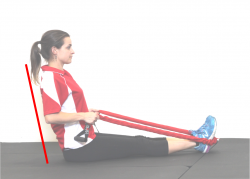
- Sit down with your legs out in front of you, hook your resistance band around your feet – making sure it’s positioned where it won’t fling off and hit you in the face!
- If you feel too much tightness in your lower back and/or hamstrings, you can bend your knees until the tightness reduces.
- Sitting up nice and tall with a flat back, lean your upper body slightly back and hold your torso still during the movement
- Your starting position will be with your arms out straight in front of you, with a slight amount of tension already on the band – if it’s too loose here, grasp further down the band until the right amount of tension is achieved
- Squeezing your shoulder blades together, pull the handles towards your belly/hips, being careful to pull your shoulders down and back.
- When your hands are beside your torso/hips, pause for a second, before slowly moving your arms back to their start position.
Common mistakes
Pulling from the low back/ swayingThe muscles we are trying to target with the pulling movement are the upper back muscles – the lats, the rhomboids, lower and middle traps and the rear delts. If the movement is being generated from the lower back, we are placing excessive emphasis on the muscles of the lower back, and stress on the spine. Focus on keeping your back nice and still and straight, squeezing shoulder blades back and together as your pull. |
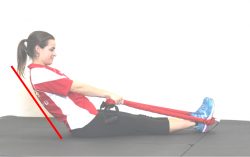 |
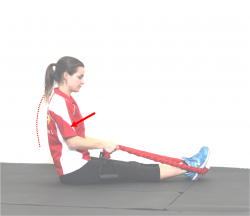 |
Letting your arms do all the workIt is very easy to let the muscles in the arms, primarily the biceps, do all the work in rowing/pulling movements. In order to make sure that we engage all the important muscles of the upper back, we need to consciously squeeze our shoulder blades back and together, and focus on pulling the shoulders down and back by contracting the lats and lower traps. |
Shrugging shoulders upMost of us tend to be overly tight in the upper traps – the muscles connecting the shoulders to the neck. It’s the natural tendency for the tight muscles to contract when the weak muscles are struggling. We need to fight the urge to shrug the shoulders up, and consciously pull them down and back as we row by squeezing the shoulder blades together and down. |
 |
 |
Small ROMIn order to achieve a full range of motion, a seated row needs to end with the handles basically touching the hips or torso depending on which handles or attachment you are using. Stopping short of a full range neglects the final part of the movement, and will not completely engage the target muscles as needed. |
| Rounded back
This poor form is usually indicative of an underlying poor posture due to tight chest muscles and weak back muscles. Sit up straight, pull your shoulders down, and squeeze the shoulder blades back and down to help correct this. |
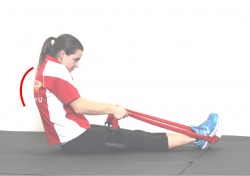 |
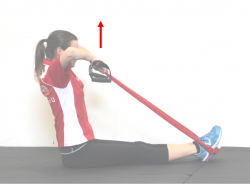 |
Pull too high
This movement is more focussed on the usually over-tight upper traps, and not as effective for strengthening your weaker back muscles in the lower traps and rhomboids. Unless you specifically want to target upper traps, keep your shoulders down and back, and pull the handles to your hips instead of shoulders. |

